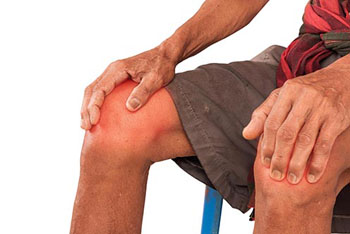Therapies Designed to Restore Damaged Cartilage Are Ineffectual HST
By HospiMedica International staff writers
Posted on 27 Jul 2016
The collagen matrix of human articular cartilage is an essentially permanent structure that has no significant turnover in adults, according to a new study.Posted on 27 Jul 2016
Researchers at the University of Copenhagen (KU, Denmark), Aarhus University (Denmark), and other institutions used the carbon-14 (C14) bomb-pulse dating method to measure life-long replacement rates of collagen in tibial plateau cartilage from 23 people aged 18 to 76 years of age, who underwent knee replacement surgery; 15 of the participants suffered from osteoarthritis (OA), and 8 had healthy cartilage. Since the study's goal was to assess collagen turnover, other substances were filtered out of the samples.

Image: Research shows damaged cartilage cannot heal itself (Photo courtesy of the University of Copenhagen).
C14 results revealed that virtually no replacement of the collagen matrix happened after reaching skeletal maturity, and neither OA nor tissue damage influenced collagen turnover. Regional C14 differences across the joint surface showed that cartilage collagen located centrally formed several years earlier than the collagen located peripherally. However, when the researchers examined the filtrates removed from the collagen matrix, they found that collaglycos-aminoglycans (GAGs) had a much faster turnover rate, making them a potential therapeutic target in the treatment of OA. The study was published on July 6, 2016, in Science Translational Medicine.
“This finding has important implications for the tissue engineering and regenerative medicine fields, where the structural permanence of collagen will need to be contemplated when designing new cartilage repair strategies”, concluded lead author Katja Heinemeier, PhD, of KU, and colleagues. “OA research should aim at overall prevention, and/or therapeutic techniques that target GAGs, or other substances with quick turnover rates when compared with collagen.”
“Optimally, we should prevent injuries from childhood and teenage years and possibly also examine whether we are prone to cartilage injuries later in life. However, once the damage is done, you can, by way of gentle exercise, train other molecules in the cartilage to absorb fluids, which in turn will increase the remaining cartilage’s elasticity and shock absorption,” concluded senior author Professor Michael Kjær, MD, of KU. “Generally speaking though, we should stay active throughout life and avoid too much wear and tear in our joints.”
Cartilage structures and functions can be damaged due to a variety of causes, such as a bad fall or traumatic sport-accident, previous knee injuries, or wear and tear over time. Articular cartilage does not usually regenerate after injury or disease, leading to loss of tissue and formation of a defect. Collagen (which is Latin for glue), in turn, is the main structural protein of connective tissue, and is the most abundant protein in mammals, making up 25-35% of the whole-body protein content.
Related Links:
University of Copenhagen
Aarhus University














